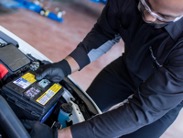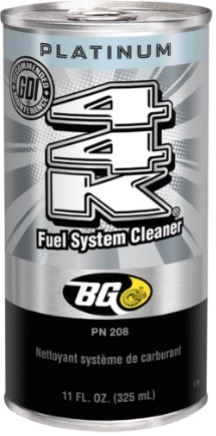Normal activities in a pre-COVID world are a distant memory. Many people have been able to work from home rather than commute. Others have lost employment, especially industries relating to hospitality and leisure. Some have shifted to food delivery service rather than going to the grocery store. Shopping has shifting dramatically to from brick-and-mortar retailers to online vendors. Social activities have grounded to a halt. Each of these situations have pointed to less use to automobiles.
 Lower Vehicle Usage
Lower Vehicle Usage
Chances are if you haven’t been commuting to work, your vehicle hasn’t been getting much, if any, use during the last year. Not driving can have its financial advantages, since you aren’t gassing up as often and may even save money on auto insurance premiums. On the flipside, a vehicle that sits idle for too long could end up building up hefty repair bills. Whether you are working from home, following social distancing guidelines, or just storing your car for the winter, parking it for long periods of time can be detrimental to your car.
The result? You may have trouble getting your car started when it is time for your next drive. But with the proper preparation, it’s possible to let your car sit most of the time for months with no major issues.
Keep It Charged
 An unattended battery will eventually lose its charge. Get someone to start the vehicle every week and drive it for at least 15 minutes. Driving the vehicle periodically has several benefits. It will maintain the battery's charge, help the vehicle "stretch its legs," and keep the engine and other components adequately lubricated. It is also a good idea to run the air conditioner to keep the parts in working order and the air quality fresh. A 5-minute drive to the grocery store will not be sufficient time to allow the alternator to recharge the battery. Use this maintenance item as an excuse to drive by a friend’s house to say “hi.” Clearly this should occur in a socially distant manner which may boil down to a drive-by wave.
An unattended battery will eventually lose its charge. Get someone to start the vehicle every week and drive it for at least 15 minutes. Driving the vehicle periodically has several benefits. It will maintain the battery's charge, help the vehicle "stretch its legs," and keep the engine and other components adequately lubricated. It is also a good idea to run the air conditioner to keep the parts in working order and the air quality fresh. A 5-minute drive to the grocery store will not be sufficient time to allow the alternator to recharge the battery. Use this maintenance item as an excuse to drive by a friend’s house to say “hi.” Clearly this should occur in a socially distant manner which may boil down to a drive-by wave.
If you cannot operate the vehicle weekly for 15 minutes, there are two other options. The low-tech solution is to disconnect the negative battery cable. You will likely lose the stereo presets, time, and other settings. If you want to keep those settings and ensure that your battery starts the moment you return, purchase a battery tender, also known as a trickle charger. It delivers just enough electrical power to prevent the battery from discharging.
Prevent Flat Spots
Ensure your tires are inflated to the recommended tire pressure. If a vehicle is left stationary too long, the tires could develop flat spots as the weight of the vehicle presses down on the tires. This process occurs at a faster rate in colder temperatures and in vehicles equipped with performance low-profile tires. In some cases, merely having someone drive the car for a while will bring the tires up to their normal operating temperature and get rid of any flat spots. In more severe cases, a flat spot can become a permanent part of the tire and it will need to be replaced prematurely. If your vehicle will be in storage for longer than a month, consider taking the wheels off and placing the car on jack stands at all four corners. This step requires more work, but it can save you from needing a new set of tires.
Brakes Damage
Depending on the conditions where the car or truck is stored, brakes may corrode when the vehicle sits. This is normal; brake rotors on all but the most expensive cars are made of cast iron and corrode quickly. Simply braking while driving cleans them as the pads scrape away the corrosion. If you’re using your vehicle infrequently, you might notice a “crunch” sound the first few times you apply the brakes. It should go away. If you park somewhere that’s damp and cannot use the vehicle for a while, consider NOT applying the parking brake so that it doesn’t corrode in place. But it is important to ensure the car or truck is in gear/park and safely situated.
Keep Critters Out
A garage will keep your car, truck, or SUV dry and relatively warm. Unfortunately, those are also two things that make a garaged vehicle attractive to rodents. There are plenty of places in your automobile for critters to hide, and plenty of things for them to chew on. Try to cover any gaps where a mouse could enter, such as the exhaust pipe or an air intake. Steel wool works well for this. Another potential solution is parking the vehicle farther away from landscape features (e.g., rock walls and trees) that are already rodent-friendly. A variety of repellents are available and, of course, traps.
Cosmetics Matter
Garaging a vehicle is ideal but that’s not always an option. In such situations where a vehicle must be parked outside, consider using sunshades to keep damaging UV rays from the interior. Leather internal trim especially can crack with excess exposure from sunlight. If you are considering covering your car, remember to buy something vehicle-specific. As a note, plastic tarps from the hardware store don’t cut it and can damage your paint. You also don’t want the wind to pick up a tarp and have it fly down the road causing a liable hazard!
 Avoid Old Fuel/Gasoline
Avoid Old Fuel/Gasoline
While most of society piles up less mileage on their vehicle, the average time between gas refuels gets extended. The gas savings is nice, but old gasoline in a machine is not healthy. People who use gas-powered tools, operate a boat or work with other motorized system probably know that gasoline, particularly gasoline that is mixed with ethanol, has a shelf life. That’s why lawn mowers and such need to be “run dry” at the end of the season or have a stabilizer chemical mixed into the fuel. Although it is not healthy to keep your vehicle close to empty for prolonged periods, it may be preferable to refill to the midway point of your fuel tank to ensure the gasoline in the system does not get too old. Moreover, when you are ready to use the vehicle more frequently, a fuel system and injector cleaning, such as 44K Platinum by BG, would be recommended.
Getting a Vehicle Back into Regular Use
As the COVID pandemic hopefully ends in 2021, there are some items worth checking before transitioning from occasional to frequent vehicle use. Here is a checklist of what to do when you are ready to bring your vehicle out of limited use:
· Check under the hood for any evidence of rodents. Look for chewed belts, hoses, wires, or nests. If you covered the muffler or air intake, remove that material before you start the car.
· Check the windshield wipers to see if the rubber is cracked or brittle. Check the tire pressure and inflate the tires to the recommended specs.
· Check the brakes. Rust may have accumulated on the rotors. In most cases, it should go away after you drive the vehicle for a short time.
· Check fluids to make sure there have been no leaks and that they are at the recommended levels.
· If the battery cable has been disconnected, ensure you reconnect it and that the battery terminals are clean. Or if your battery is dead, get a jumper box hooked up. If it starts, let the vehicle run for at least 20 minutes to allow the battery to recharge before shutting it off.
· Wash your vehicle to remove any dirt that may have accumulated.
· Schedule an oil change as soon as possible. Even if you have not reached the mileage allowance for an oil service, after a long period of time, it is advisable to get fresh fluid into the engine. Also, the Hotchkiss Auto team answers 10 Questions on Oil Changes to ensure your vehicle maintenance is done correctly!
The team at Hotchkiss Auto Repair is excited for society to get back to some version of “normal.” If you need any assistance with a vehicle inspection or service, give our team a call (303-780-7747) and we’d be glad to help. We’ve provided customers across Denver metro and Colorado extended longevity and reliability for their vehicle. Let us be your local repair shop and you won’t regret it!